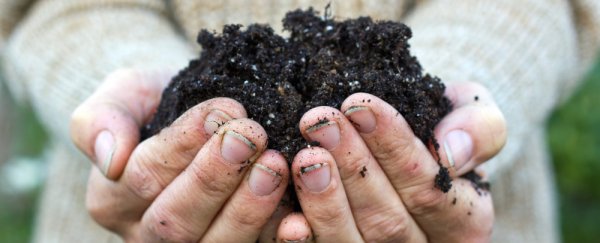A citizen science project led by researchers at Rockefeller University in New York is interested in mapping the genetic riches of soil from all around world.
The objective is to uncover new bacteria in unexpected (and hard to reach) places, which could lead to the development of new types of antibiotics and other drugs.
The Drugs from Dirt project was started by microbiologist Sean Brady.
So far, his Rockefeller University team has analysed 185 soil samples from beaches, forests and deserts on five continents, and have already pegged some locations where soil bacteria could prove useful to developing new drugs.
In a sample from New Mexico, for instance, they found gene clusters similar to those that produce a substance known as epoxomicin, which the researchers say is a "natural molecule used as the starting point for a number of recently approved anti- cancer agents".
In soil samples from Brazil, the team also found genes that could be useful to make a variant of bleomycin, which is used to treat several different types of cancer.
"The unbelievable diversity we found is a first step towards our dream of building a world map of chemicals produced by microbes - similar to Google Earth's and others' maps of the world's geography," said Brady, in a press release.
They team recently published a report documenting these initial analyses in the journal eLife Sciences.
But the team is nowhere near finished.
They want to collect thousands of soil samples (and you could help them, by signing up and sending in a couple of teaspoons of your own local dirt).
The goal is to learn more about the "enormous untapped reservoir" of biosynthetic gene clusters in the environment - something the researchers call "biosynthetic dark matter".
These biosynthetic genes, known to be present in soil bacteria, are hugely important for the development of new drugs and therapeutic compounds.
The majority of antibiotics in use today are derived from soil bacteria, but the development of new antibiotics has been relatively stagnant, which is problematic given the increasing problem of drug resistance.
In a report chaired in December 2014, economists and scientists predicted that antimicrobial resistance will kill 300 million people and cost the global economy US$100 trillion by 2050 unless government action is taken immediately.
One of the reasons why fewer drugs are being developed is the incredible diversity of microbial life in soil that remains undiscovered.
According to the Rockefeller University team's press release, "for every cultured bacterial species, there are 100 uncultivated species in the environment".
The amazing value of seemingly mundane soil samples for drug discovery was highlighted earlier this month when a team of US researchers reported the discovery of a new class of antibiotic, which was shown to kill staph and strep throat in mice with incredible efficiency.
It was the result of bacteria found dwelling in the soil of a grassy field in Maine, US.
"They found a rare compound that does a really neat thing – but maybe it's not the best one that nature made," Brady told New Scientist.
Source: New Scientist
